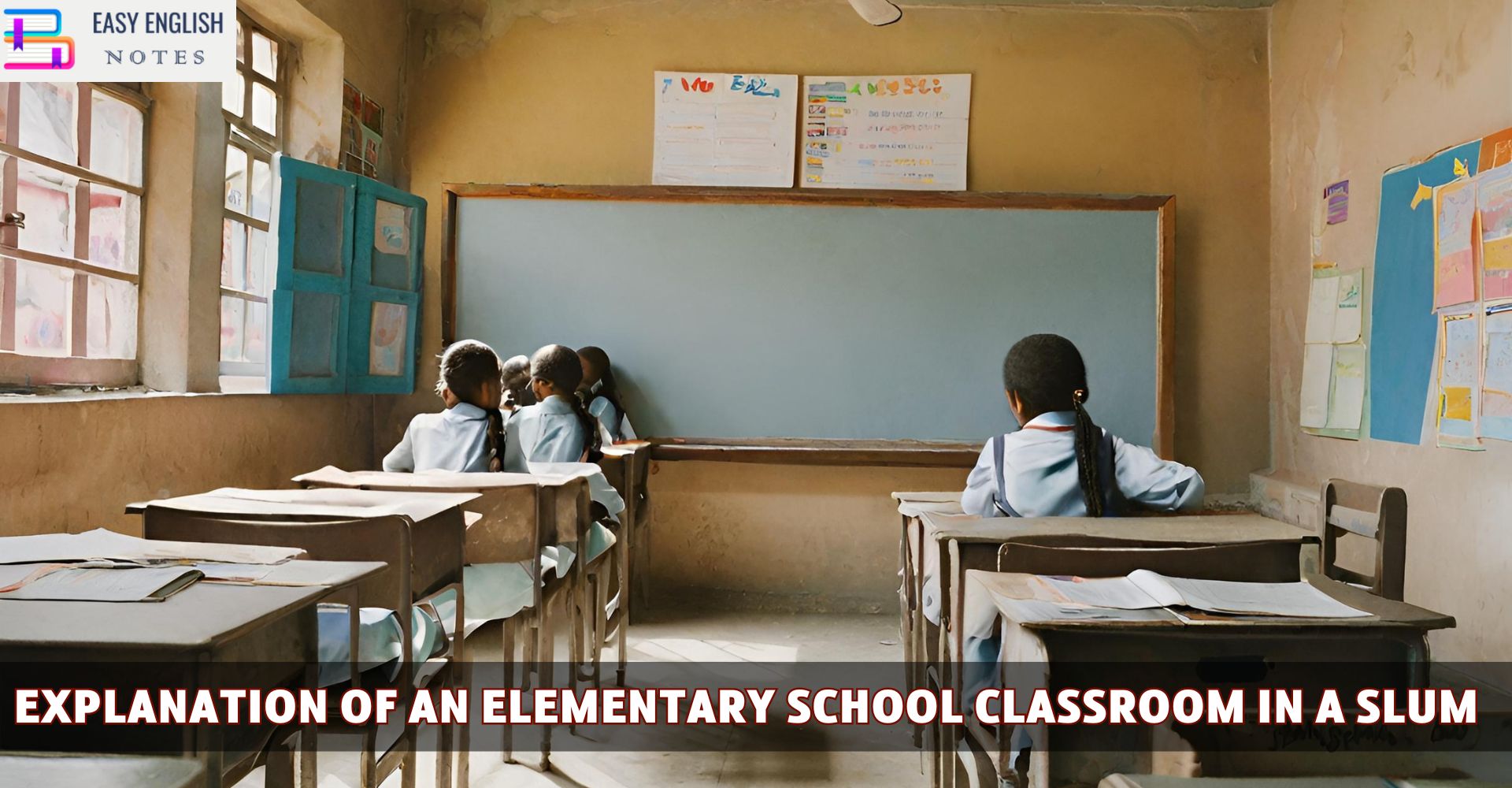(1) Far far from gusty waves, these children’s faces
Like rootless weeds the torn hair round their paleness
The tall girl with her weighed-down head
The paper-seeming boy with rat’s eyes.
Expl. These lines have been taken from ‘An Elementary School Classroom In a Slum’ by Stephen Spender. In the poem the poet says that in the slum schools are being opened where the boys and the girls are being taught. But these students are being taught filthy substances. The boys as well as the girls are in the same condition. The condition of the boys is that the hair are torn and rootless weeds. The eyes are like rat’s eyes.
(2) Surely Shakespeare is wicked the map a bad example
With ships and sun and love tempting them to steal.
For lives that skylay turn in their cramped holes
From fog to endless night?
Expl. These lines have been taken from An Elementary School Classroom In a Slum’ by Stephen Spender. The poet says that schools are being opened in the slum areas where the boys and the girls are being taught. But the students are taught filthy substances. In the classroom there are picture of Shakespeare. Except this there are Toyal valley and a map of the world. These pictures and substances are out of from the interests and concerns of the children. The world of children is their classroom windows opening out in the foggy world of the slum.
Also Read :
- Compare Hamlet with Macbeth, Othello and other Tragedies
- “The Pardoner’s Tale” is the finest tale of Chaucer
- Prologue to Canterbury Tales – (Short Ques & Ans)
- Confessional Poetry – Definition & meaning
- Line By Line Explanation Of The Poem The Eve of St. Agnes
“An Elementary School Classroom in a Slum” is a poignant poem by Stephen Spender that paints a vivid and somber picture of the harsh realities faced by children in a slum-bound school. The poem is a profound commentary on social inequality and the impact of poverty on education. Here are the key elements and themes of the poem:
- Setting and Imagery: The poem is set in a dilapidated classroom in a slum. Spender uses stark and powerful imagery to depict the environment and the children in it. The room is described as bleak and confined, with maps and pictures that contrast sharply with the world the children inhabit.
- Description of the Children: The children in the classroom are portrayed as undernourished and sickly, suffering from diseases caused by poverty and neglect. They are depicted as trapped in their circumstances, with little hope for the future.
- Contrast Between the Classroom and the Outside World: The poem contrasts the colorful images and maps on the classroom walls, which represent a world of possibilities and beauty, with the grim reality of the slum. This contrast highlights the disparity between the children’s potential and their actual living conditions.
- Critique of the Education System: Spender criticizes the education system for failing to address the needs of these children. The poem suggests that the education provided is irrelevant to their lives and does not equip them to break free from the cycle of poverty.
- Social Commentary: The poem serves as a powerful social commentary on the neglect of the underprivileged, especially children in slums. It calls attention to the need for societal change to provide these children with real opportunities.
- Call for Transformation: Towards the end, the poem becomes a call to action. Spender urges for a transformation in the way society treats these children, suggesting that education should be a means to liberate them from the confines of poverty.
“An Elementary School Classroom in a Slum” is not just a vivid portrayal of a grim reality but also a profound statement on the role of education in social change. It challenges the reader to acknowledge and address the disparities that exist in society, emphasizing the transformative power of education when it is attuned to the needs of the marginalized.











